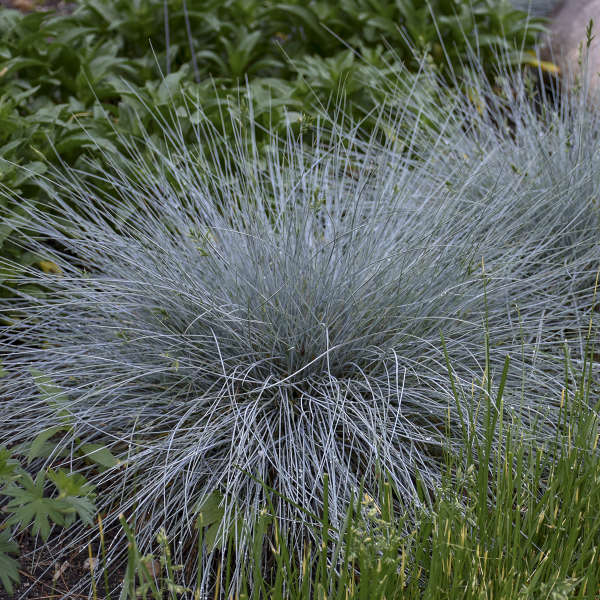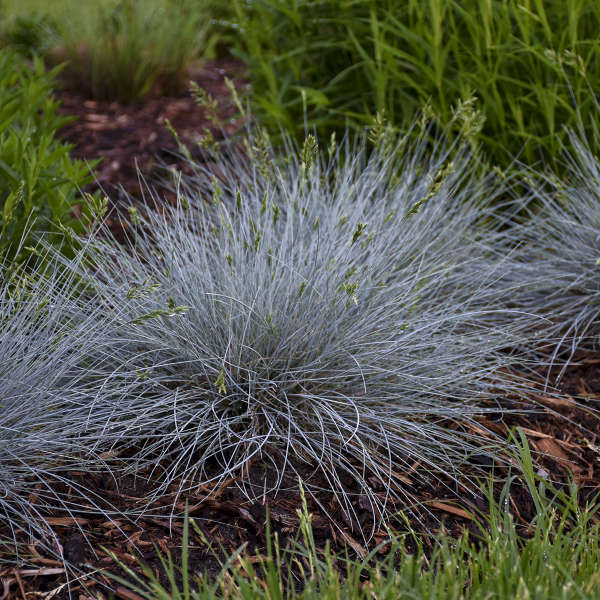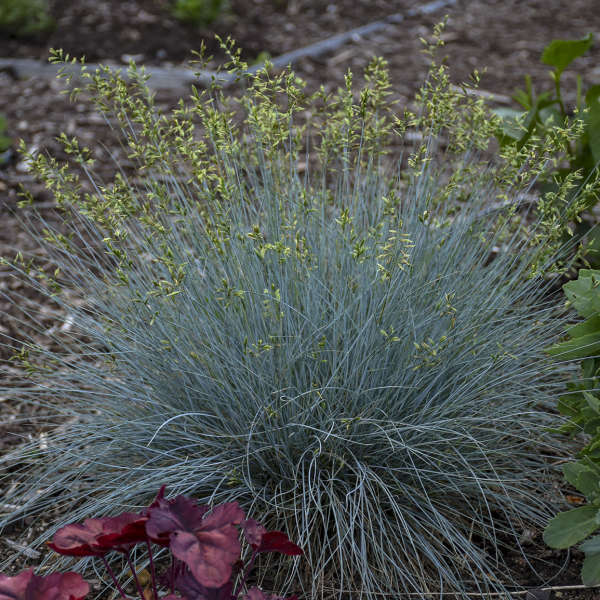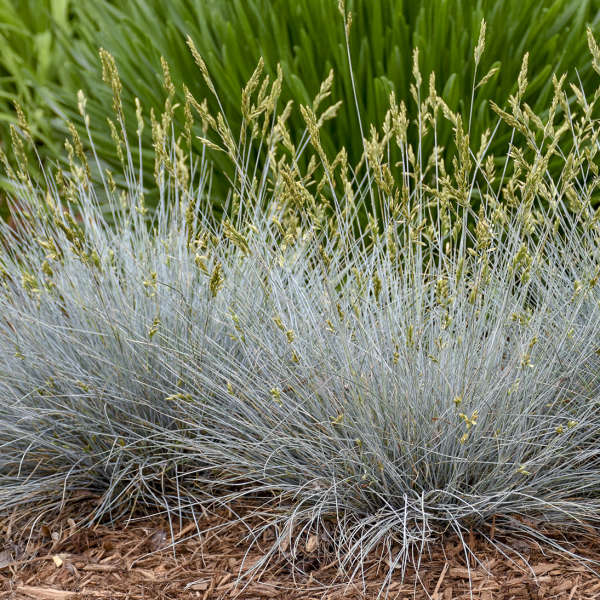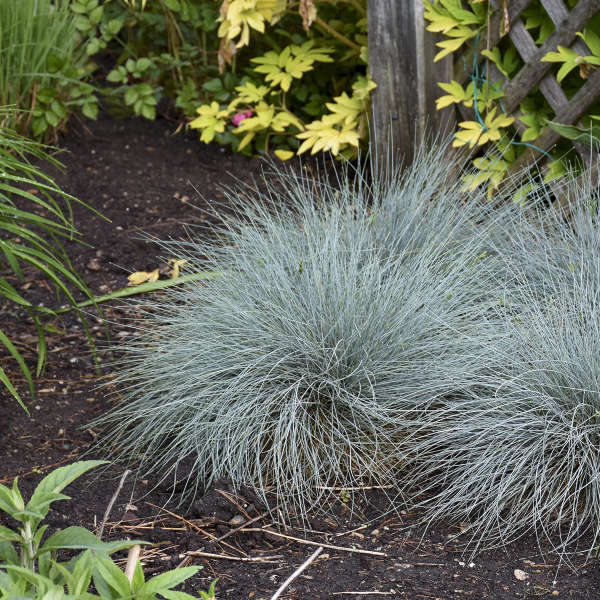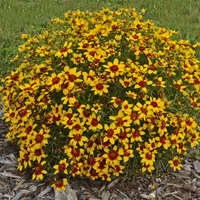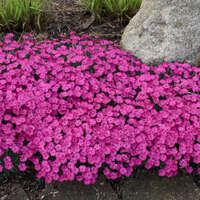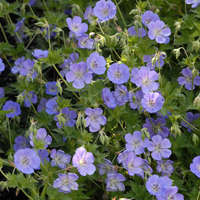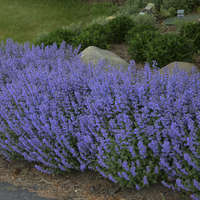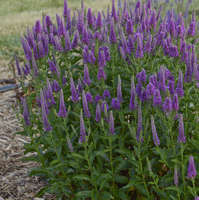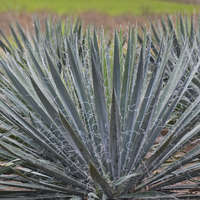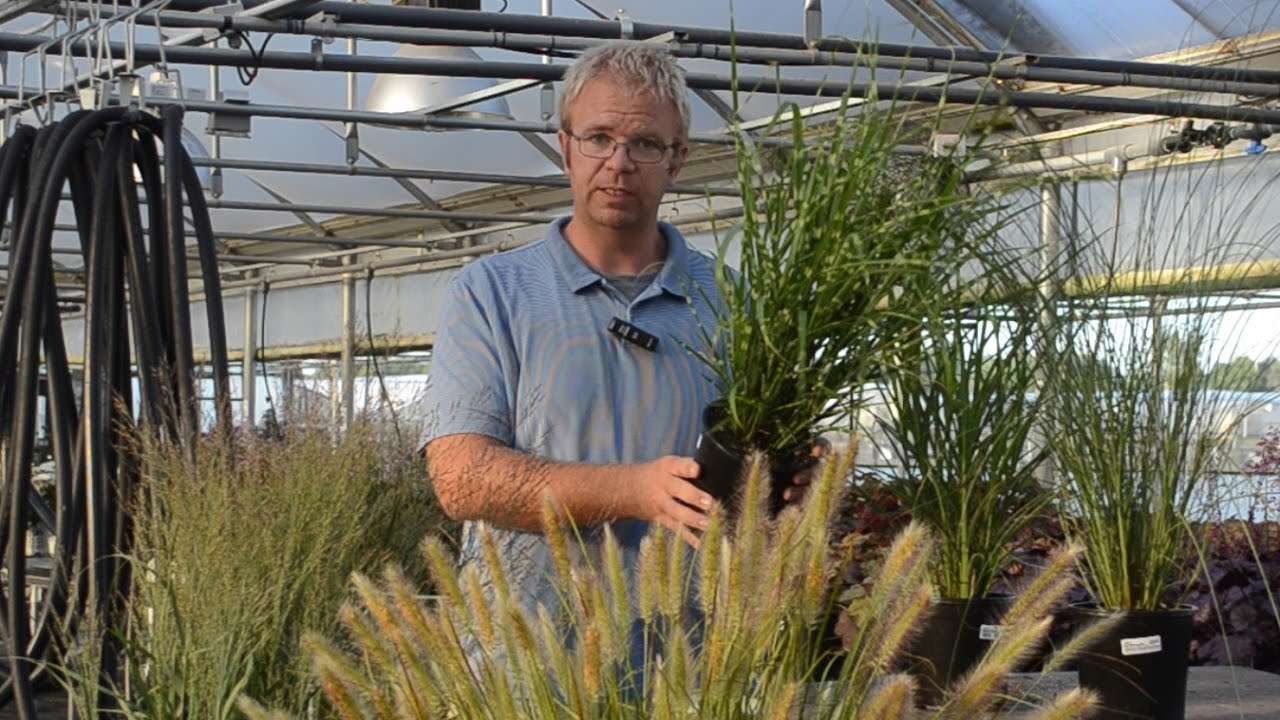Festuca glauca 'Blue Whiskers' PP29200

Common Name: Blue Fescue, Ornamental Grass
When it comes to ornamental grasses, Blue Fescue has long been a popular choice due to its diminutive size and interesting texture. Compared to classic variety ‘Elijah Blue’, ‘Blue Whiskers’ is a taller, more vigorous variety, with longer leaves and a brighter blue foliage color. The finely textured, bright silvery blue leaves form a fully rounded, robust clump with consistent flower coverage across the habit. Yellow-green flowers appear above the clump on 18-22” scapes in early summer and age to tan as the season progresses.
30ct Plug Tray |
72ct Plug Tray |
